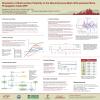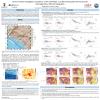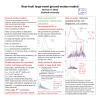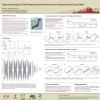Poster #206, Ground Motions
3D Simulation of Near Fault Ground Motions for the 2019 M7.1 Ridgecrest, CA Earthquake
Poster Image:

Poster Presentation
2020 SCEC Annual Meeting, Poster #206, SCEC Contribution #10405 VIEW PDF
We perform a suite of 3D ground motion simulations of the 2019 M7.1 Ridgecrest, CA earthquake to test the ability of the Graves and Pitarka (2016) kinematic rupture generator to model the main features of the near-fault recordings. In this work, we consider data from 16 strong-motion recording sites that are located within about 32 km of the M7.1 rupture. Following Ji et al. (2019), the fault is modeled using three segments with a total rupture length of 52 km. We consider a range of down-dip rupture widths from 12 to 16 km, and also a range of average rupture speeds from 60 to 70% of the local shear-wave velocity (Vs). Our 3D simulation model uses a spatial discretization of 20 meters and sets the lowest Vs at 400 m/s, which yield an upper frequency limit of 4 Hz for the simulations. Initial simulations are run in both SCEC 3D Community Velocity Models: cvmsi and cvmh. We compare our simulations to the ground-motion observations using the standard RotD50 spectral acceleration goodness-of-fit criteria described by Goulet et al. (2015). Preliminary results indicate that the smallest misfits are produced by ruptures having a down-dip width of 14 km and average rupture speed of 60% of local Vs. Additionally, we find that the relatively thick (350 m) near-surface low-velocity layering in cvmh produces strong amplification in the simulations up to periods of 3 s that are not consistent with the observations. While simulations in cvmsi provide a good match to the data, the relatively high surface velocities (Vs of 1500 to 2500 m/s) in this model are not realistic. To address this, we created a modified version of cvmsi (denoted cvmsi-m), which has a relatively thin (100 m) near-surface low-velocity layer designed to match available site profile and Vs30 data (Yong et al., 2013). Simulations in cvmsi-m still provide a good match to the ground-motion recordings while also maintaining consistency with observed near-surface seismic velocity data.




















































